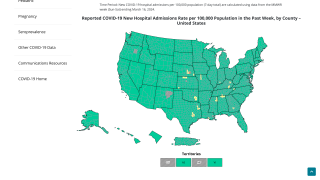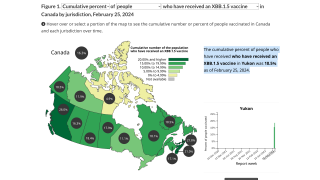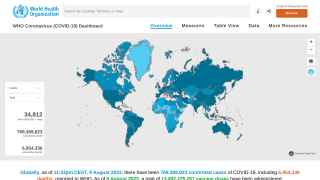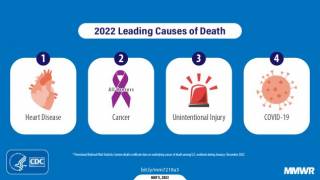Flu Vaccination May Protect Pediatric Population From Severe COVID-19

Amid the SARS-CoV-2 pandemic, chaos was anticipated from the approaching annual flu season in the Northern Hemisphere.
Could this become a "twindemic" or “syndemic” if there is any viral interference that occurs, wondered researchers from the University of Missouri (UM) School of Medicine?
These UM researchers investigated the effect of influenza and pneumococcal vaccines on the disease course of SARS-CoV-2 in the pediatric population and the possibility of viral interference.
Their study found children who receive a seasonal flu shot were less likely to suffer symptoms from a COVID-19 infection.
“It is known that a previous viral infection can inhibit the growth of one virus,” said Anjali Patwardhan, M.D., professor of pediatric rheumatology and child health at UM, in a press statement issued on February 4, 2021.
“This phenomenon is called virus interference, and it can occur even when the first virus invader is an inactivated virus, such as the case with the flu vaccine.”
Dr. Patwardhan’s team discovered that the COVID-19 positive children who received the influenza vaccine in the current flu season had lower odds of experiencing respiratory problems or severe disease. She also found that children with COVID-19 who received the pneumococcal vaccine also had lower odds of experiencing the symptomatic disease.
After approval from Institutional Review Board, a retrospective electronic chart review on 20 years and younger SARS-CoV-2 polymerase chain reaction (PCR) positive patients who visited Arkansas Children’s Hospital System between February to August 30, 2020, was performed.
These researchers explained ‘It is known that the growth of one virus can be inhibited by the previous infection with another (related or unrelated) virus in the same host through mediators like interferons and others.
The phenomenon is called virus interference.
The virus interference can occur even when the first virus invader is an inactivated virus, such as in the vaccines. The human hosts generate interferons after the encounter with their first viral antigen.
The interferons then attach to the other cell receptors and modulate cellular structure and function to protect from further infections.
The first virus interferes with the second virus’s invasion in complex ways. The first virus may achieve virus interference by inducing protective mechanisms in the host immune system or inhibiting replication through competitive survival (auto interference), competitive binding to B-cells, or inhibit activation of naïve B cells by the second viral infection.
The interference may occur by damaging/modifying the host's cellular receptors or enzymes required for the attachment, multiplication, replication, and survival of the second virus in the host cells.
There may occur a transient (1-2 weeks) immunity for a second virus infection after the first viral encounter.
The memory cells may respond to the second virus by increased antibodies against the first viral antigen coupled with decreased antibody production against second viral invaders, increasing the risk for severe disease by the second virus.
Different viruses show different virus interference levels, e.g., the influenza A(H1N1) pdm09 virus was reported to be the most potent inhibitor of subsequent viral infections.
Conversely, it was reported in the elderly population during the 2009 H1N1 pandemic that pre-infection seasonal H1N1 virus antibodies cross-reacted and neutralized pandemic influenza A(H1N1) pdm09 virus.
In the past, a transient (1-2 weeks) viral interference was reported in children after flu and polio vaccination, followed by an increase in non-flu respiratory and gastrointestinal infections.
Dr. Patwardhan said, “it will also be important to explore the connection between vaccinations and COVID-19 symptoms in a larger geographical-multiracial study. Based on these findings, we hypothesize that the higher incidence of COVID-19 in minority populations may also reflect their low vaccination rate apart from other health inequalities.”
This study also confirms the findings of previous reports informing the patients with comorbidities are more likely to be symptomatic, have respiratory symptoms, and have greater odds of severe disease course.
However, in this study’s cohort, African American children had smaller odds than White/Asian/other children to exhibit symptoms or have severe diseases. They were less likely to have severe diseases course despite a comparative higher positivity rate than Whites, Hispanics, and Asians. This finding is the first time reported in pediatric populations.
Their study, “The Flu Vaccination May Have a Protective Effect on The Course of COVID-19 in the Pediatric Population: When Does Severe Acute Respiratory Syndrome Coronavirus 2 (SARS-Cov-2) Meet Influenza,” was published in the journal Cureus on January 12, 2021.
The authors declare they have received no financial support for this study and report no conflicts of interest.
The U.S. CDC recommends annual influenza vaccinations for most people over six months of age.
PrecisionVaccinations publishes research-based vaccine news.
Our Trust Standards: Medical Advisory Committee

























